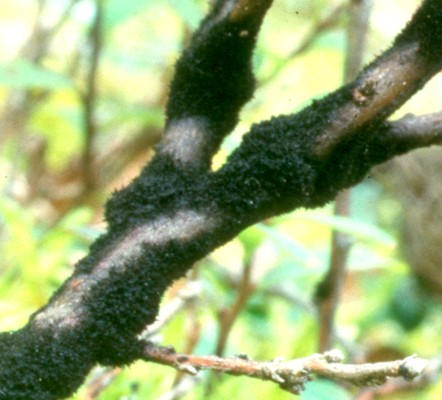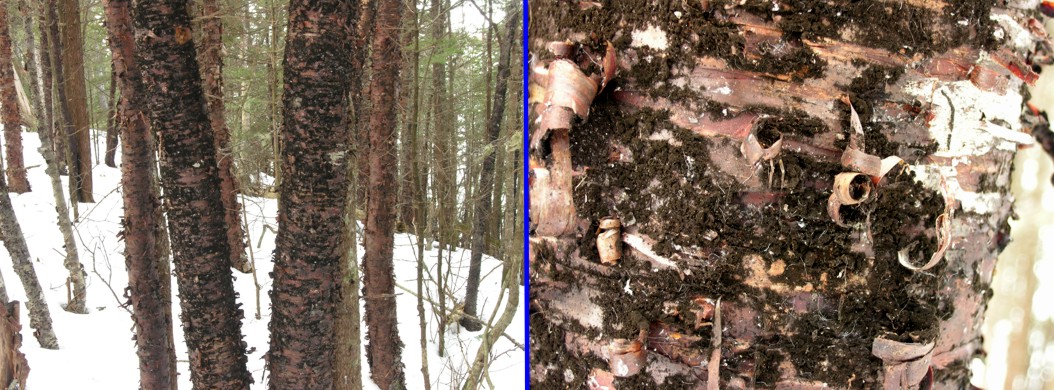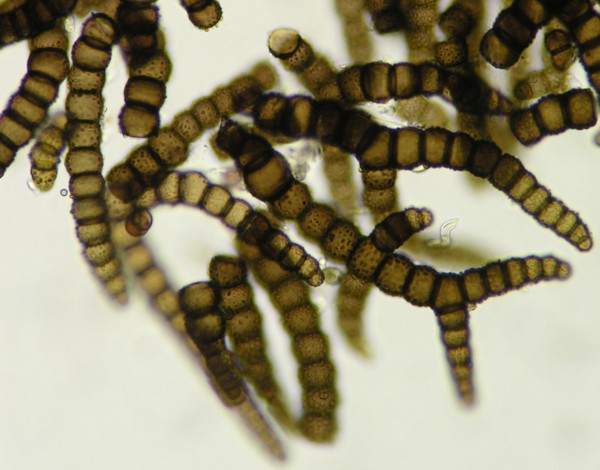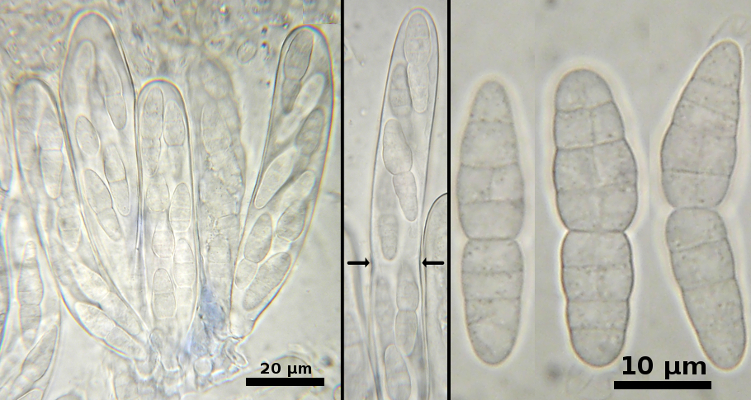Home >> Diversity and classification >> True fungi >> Dikarya >> Ascomycota >> Pyrenomycetes >> Dothideomycetes >> Dothideales and Capnodiales
THE DOTHIDEALES AND CAPNODIALES

The two orders Dothideales and Capnodiales differ from other Dothideomycetes in lacking a hamathecium. Instead the asci develop within the centrum as a dense cluster that simply force a cavity for themselves by sheer force. The Capnodiales become particularly abundant in regions with humid climates. They usually grow on the trunks and stems of woody plants where they form a heavy black growth commonly called a "sooty mould". Their mass of mycelium easily traps and holds moisture so that they can grow in elevated positions that would otherwise become too dry for most fungi. Most bear their perithecia within the hyphal masses where they are fairly well protected against drying. The perithecia take a variety of forms but are seldom very large or thick-walled. The species of Euantennaria at right is growing on the woody stem of a blueberry plant. The fungus can easily be seen as thick patches of wooly growth. The perithecia and asexual spores are produced within the mass of mycelium.


The pictures above show two stages in the development of the ascomata of D. pyrenophora.
The plate above shows two views of a Metacapnodium species that is abundant on the bark of birch trees along the coasts of New Brunswick and Newfoundland. It is most abundant on trees growing only a few meters from the sea where it is constantly exposed to dense fog during the summer months. It has a remarkable capacity for absorbing water. While the hyphae of most hyphae resist being wetted and must be pretreated with a wetting agent before being mounted on a microscope slide, this fungus absorbs large amounts of water like a sponge. The species remains unidentified because perithecia have not been seen. As the photo at right shows, this fungus has the tapering and roughened hyphae typical of the Metacapnodiaceae. It produces a Capnobotrys asexual stage, a type known only in the genus Metacapnodium.
The Dothidiales are similar in centrum structure to the Capnodiales but do not form sooty moulds. Most have rather thick-walled perithecia with one to several clusters of asci within. They are most commonly found on dead or dying branches of woody plants, often in rather exposed places.

Dothiora pyrenophora, a member of the family Dothioraceae occurring on species of the genus Sorbus (mountain ash or rowan), is fairly typical of the order. The asci are produced within cushion-like stromata that push up through the bark of the host. The stromata are quite firm and composed of dark and more or less spherical cells. These stromata are produced well ahead of ascus-formation and are often found in a completely immature state. Nearing maturity the asci begin to form inside the stromata, forming a ring of white tissue, sort of an ascus-bearing doughnut. When the ascospores are mature the upper part of the stroma disintegrates, allowing thm to be discharged.

The pictures above show two stages in the development of the ascomata of D. pyrenophora. The stroma at left shows two areas that have become light-coloured as the tissues begin to break down. You should bear in mind that the fertile region of the stroma forms a doughnut-like ring and is not in two different areas as it appears in the section here. The picure above right shows how the developing asci have begun to push their way into the dissolved tissues. Eventually, all the tissues above the asci would disintegrate. For further discussion of this interesting fungus visit the essay page for Dothiora pyrenophora
